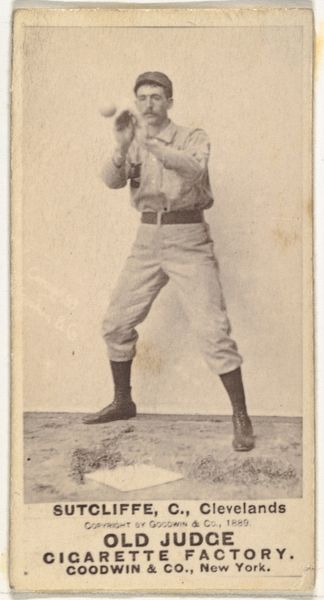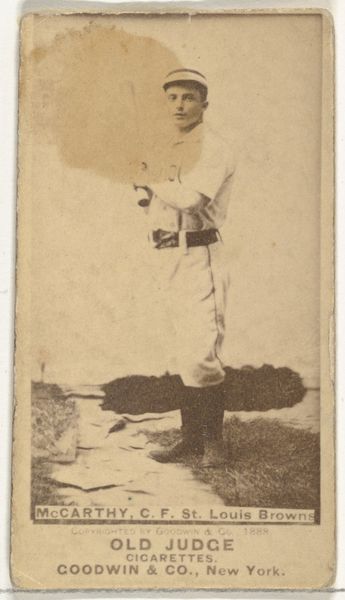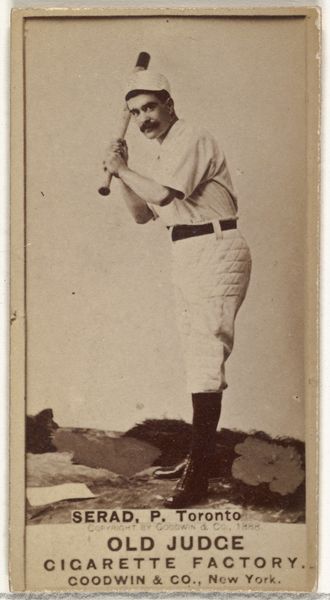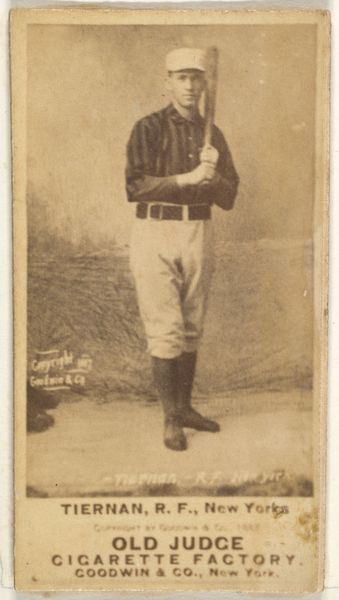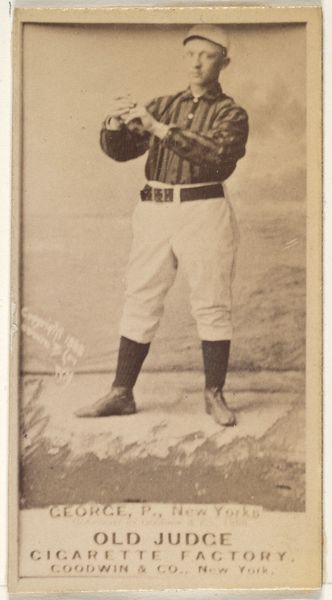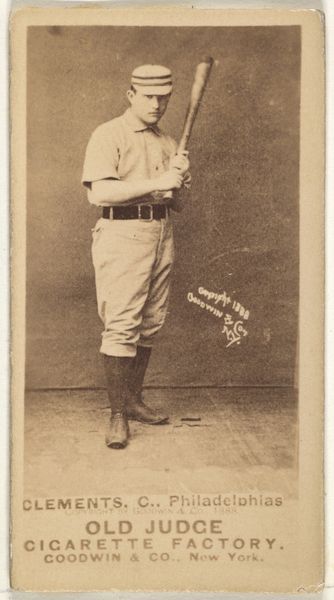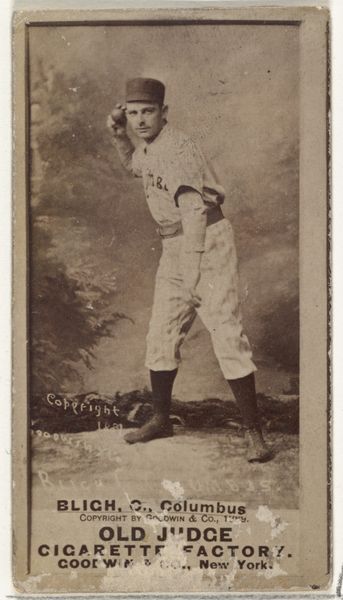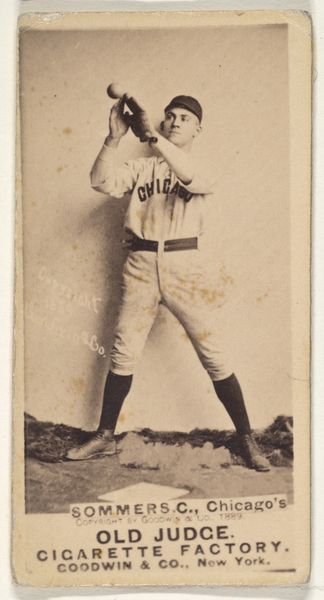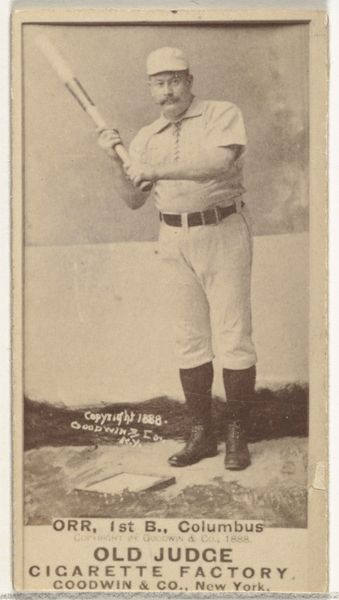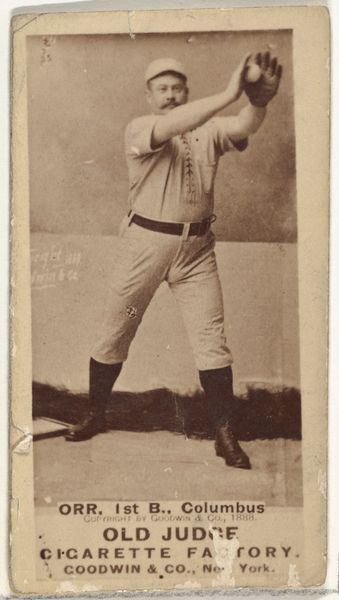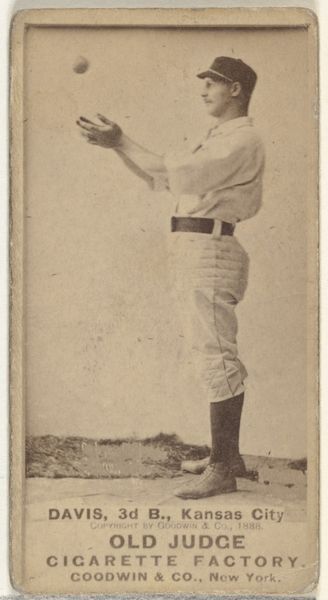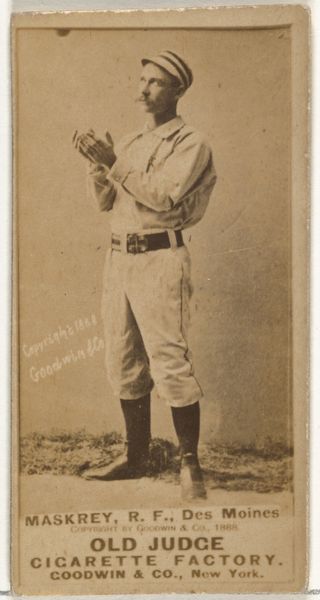
Clark, Catcher, Brooklyn Bridegrooms, from the Old Judge series (N172) for Old Judge Cigarettes 1889
0:00
0:00
print, photography, gelatin-silver-print, albumen-print
#
portrait
# print
#
baseball
#
photography
#
gelatin-silver-print
#
genre-painting
#
albumen-print
Dimensions: sheet: 2 11/16 x 1 3/8 in. (6.9 x 3.5 cm)
Copyright: Public Domain
Editor: So, this is "Clark, Catcher, Brooklyn Bridegrooms," a baseball card from 1889. It was made by Goodwin & Company as part of their Old Judge Cigarettes series. It's a gelatin-silver print. What strikes me is the composition - how Clark's gaze is directed upwards, almost hopeful. How do you interpret this work? Curator: The hopeful gaze you observed speaks to the broader narratives surrounding the industrial revolution in the U.S. The commercial image, originally included in a cigarette pack, normalizes the intense exploitation of working class peoples. These types of images romanticized a masculine ideal, celebrating players like Clark while diverting attention from the realities of labor, gender, and race during this era. Editor: So, this image is about something more than just baseball. I’m wondering why focus on the gaze so much? Curator: Because gaze signifies power. Here, Clark’s upward gaze may signify aspiration or hope, and we should remember the legacy of colonialism, sexism and other prejudices impacting social mobility at this time. His hopeful pose can therefore mask or perhaps normalize inequities pervasive within the labor and social structures of the period. Editor: That's a really interesting way to look at it, as less of an individual portrait and more as a commentary on the times. I see how the hopeful image deflects attention away from the socio-political conditions of that time. Curator: Exactly. Understanding this image demands a critical approach to unpack these contradictions and recognize the multiple layers of meaning it conveys. It reminds us that art, even in its most commercial forms, is always implicated in larger systems of power and representation. Editor: This has made me rethink how I look at these types of portraits, beyond the surface and into the deeper social implications. Thanks!
Comments
No comments
Be the first to comment and join the conversation on the ultimate creative platform.

